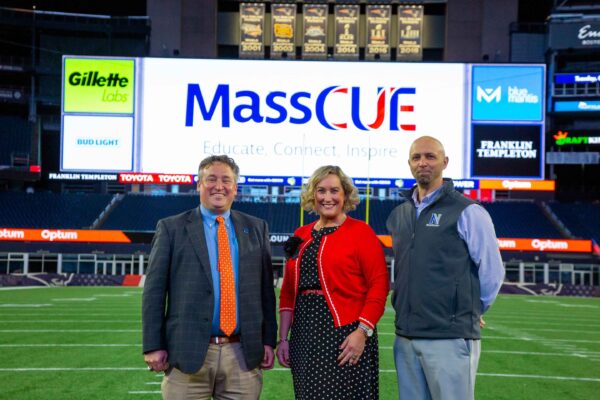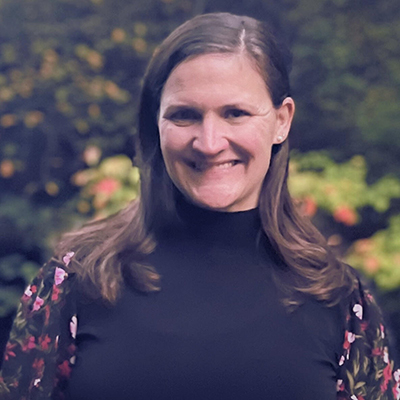MassCUE Grant Funding in Action
Going Digital for an Invention Convention
by Deb Hobday
In 2020, the Lower School Science teacher and I (Librarian/Technology Integrationist) teamed up to prepare our 3rd grade students for participation in the Massachusetts Invention Convention, (link: https://lemelson.mit.edu/massachusetts-invention-convention) in collaboration with the Lemelson-MIT Program. As we had a few students still learning remotely at this time, this was a great add-on to the science curriculum. Students worked in our classroom and at home to develop ideas and prototypes. During the process, particularly as students were creating logs documenting their efforts and making prototypes of their inventions, it occurred to me that this process would be a great place to introduce the students to some cool tech tools. Fast forward to the 2021-22 school year, with a new Lower School Science Teacher signed on as an enthusiastic partner, I began looking for ways to incorporate technology into our Invention Convention process.
The MassCUE grant made the difference.
We were fortunate this year to receive a MassCUE grant, which allowed us to buy a set of Chromebooks for our maker space/library. These Chromebooks proved to be invaluable to all of the technology goals we set for the Invention Convention curriculum. With these devices, the students were able to develop digital logs to document their efforts as they developed their creations. We are a Google Workspace for Education school and the students were already familiar with Google slides. Each invention group utilized the slides to document everything from how they generated their ideas to how they assembled their prototype.
The students also accessed Computer Aided Design (CAD) tools that allowed them to incorporate a 3D printed element into their invention prototype. Introducing 3D printing and CAD a few years ago, we were able to add a QiDi 3D (link: http://www.qd3dprinter.com/ ) printer to our small (but exciting!) maker space. While students at the Upper School and Middle School divisions have made use of this 3D printer for class projects, such as habitat objects for science class biome models and atomic orbitals for chemistry class demonstrations, the Lower School students had not had the opportunity to engage with the technology.
Since the 3rd graders often spend time working on other projects in this maker space, they were very curious about the 3D printer. I introduced the students to two resources to help them make use of the 3D printer. The first resource was MakerBot’s Thingiverse (link: https://www.makerbot.com/thingiverse/ ) community. At Thingiverse.com, the students could search for objects related to their inventions. This resource also gave them an opportunity to see what types of objects can be created with a 3D printer.
The second resource we explored was Autodesk’s Tinkercad (link: https://www.tinkercad.com/). We started with a brief introduction to the idea of Computer-Aided Design (CAD) and talked about some of the careers they may choose that would require them to use CAD software. Many of the students were quick to share stories of parents and other family members who used CAD in their work. Once the students were able to access Tinkercad independently and use the various tools of the app, the science teacher asked them to sketch the prototypes for their inventions, and then we helped them identify a part of the prototype that could be created on the 3D printer. They got right to work on the designs and within a week we had files ready to print.
Exciting 3D print days
I think it is important for 3rd graders to see the printing process, so each morning I would have a few of the 3rd-grade students help me set up the printer and get a print job started. I arranged the 3D printer close to the glass window in the maker space doorway and all day the students stopped by to watch the printing and check on the progress. Once the items were printed, they incorporated them into the prototype and documented their 3D printer experience in their invention log.
Impact on the Lower School
The Invention Convention project and the addition of the Chromebooks to the maker space had a big impact on the 3rd graders. They gained a great deal of confidence in using technology for a purpose and had a better understanding of how various types of technology can work together. However, I have been happy to see that the impact goes beyond the 3rd grade. I have been approached by 5th graders who wanted to 3D print models of ships and horse carriages for a humanities project and World Languages and Cultures teacher has added a 3D print element to her capstone project. I love how planting just one seed can yield so much enthusiasm for technology. We will be continuing to look for ways to use all of our technology tools to open more doors for our students.
Invention Convention results
In case you are wondering, one of our 3rd-grade inventions did receive a Merit Award at the Invention Convention. These students created a device they called “Basking for Plastic.” They used the technology we introduced to free-hand design a shark fin, which they attached to a small boat they were recycling — creating a remote-controlled device to remove plastic from the ocean. Not only did their invention show how they are committed to improving the environment, but it looks cool too!
About the Author

Deb Hobday is a Librarian at Cape Cod Academy in Osterville, MA. She has been teaching in the New England area for over 30 years and welcomes opportunities to combine her undergraduate work in the arts with her library and research expertise. Since starting her career, technology has been at the forefront of her interests, and she is constantly amazed at the places technology can take her students of all ages.
 Print this post
Print this post





